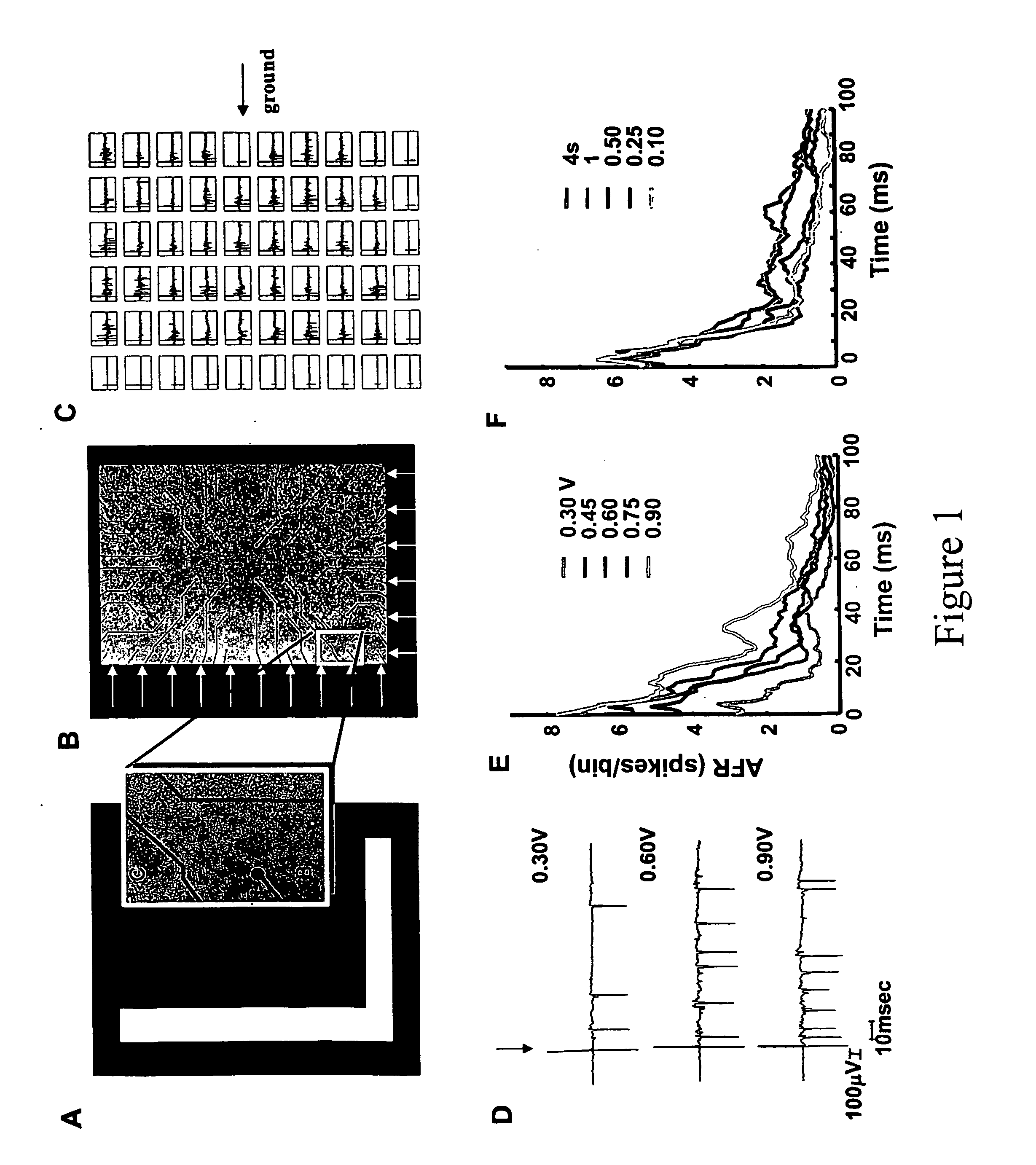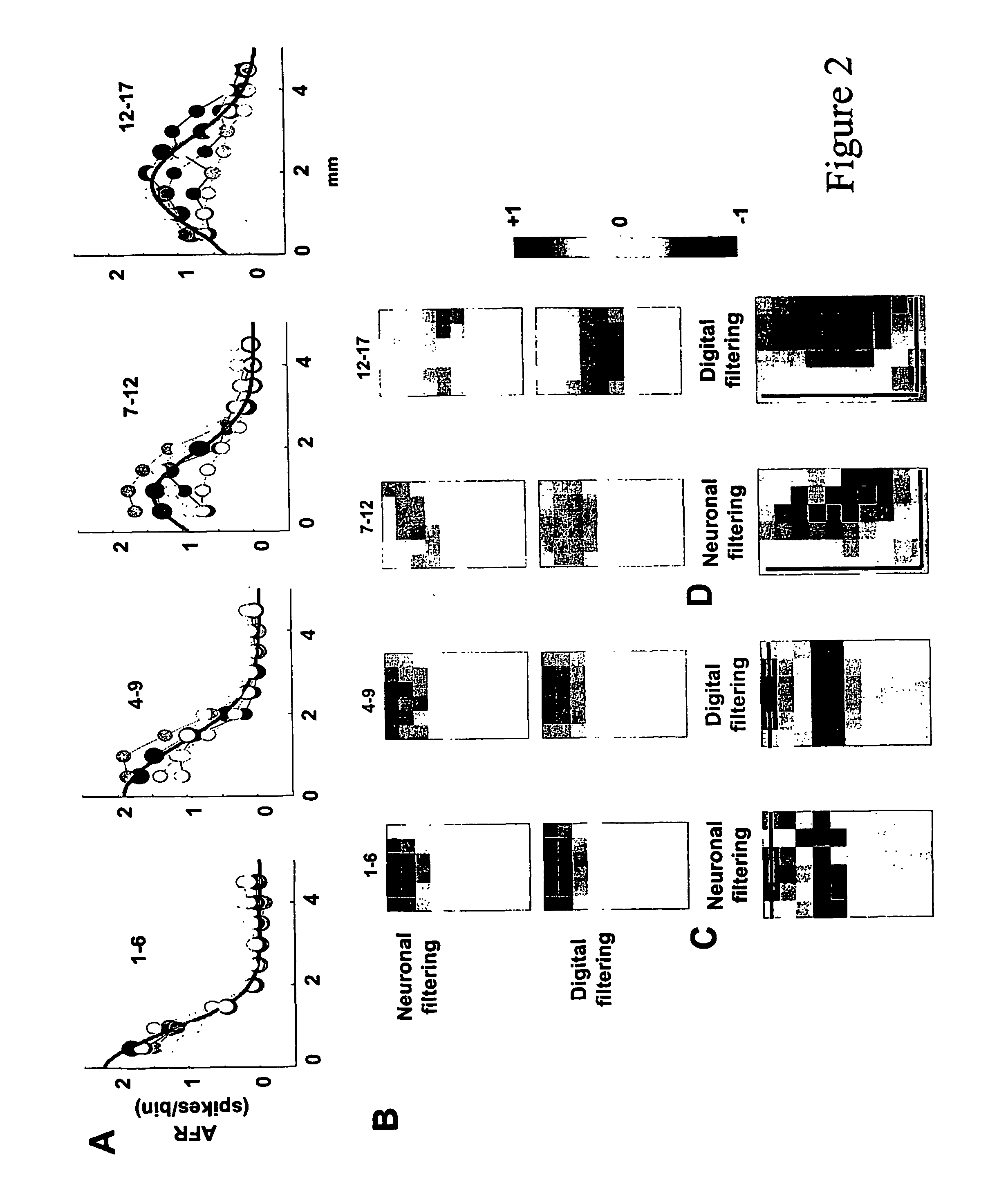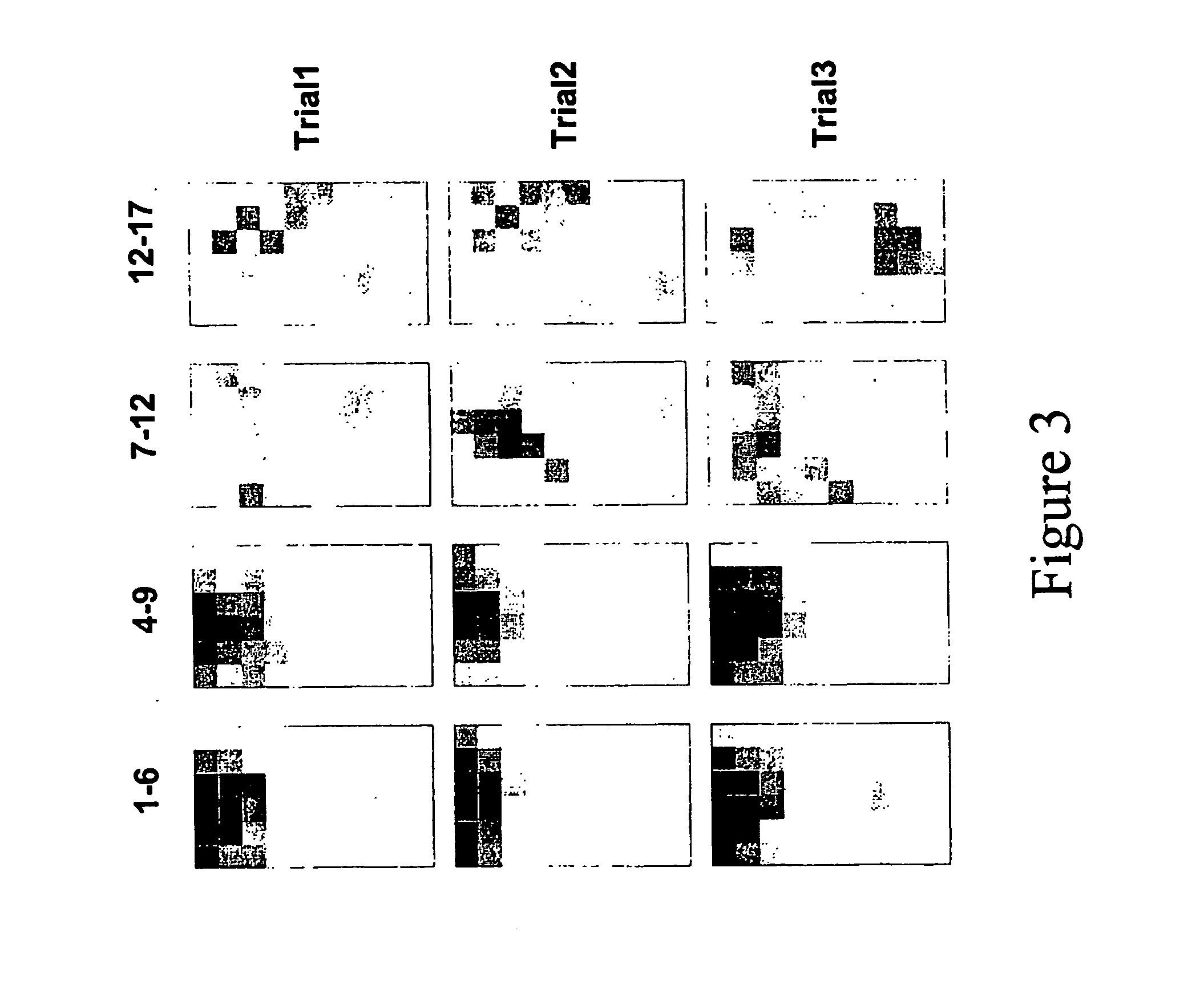Method and device for image processing and learning with neuronal cultures
a neuronal culture and image processing technology, applied in the field of methods and devices for image processing and learning with neuronal cultures, can solve the problems of less suitable for solving massive parallel problems and less suitable for massive parallelism of man-made devices
- Summary
- Abstract
- Description
- Claims
- Application Information
AI Technical Summary
Benefits of technology
Problems solved by technology
Method used
Image
Examples
Embodiment Construction
[0005] Information processing in the nervous system is based on parallel computation, adaptation and learning. These features inspired the development of Artificial Neural Networks (ANNs), which were implemented on digital serial computers and not parallel processors. Using commercially available multi-electrode arrays (MEA) to record and stimulate the electrical activity from neuronal cultures, the authors have explored the possibility of processing information directly with biological neuronal networks. By mapping digital images, i.e. array of pixels, into the stimulation of the neuronal cultures, it is possible to obtain a dynamical low pass filtering of images within just few milliseconds, and, by subtraction, a band pass filtering of them. Response to specific spatial patterns of stimulation could be potentiated by an appropriate training (tetanization) as consequence of changes in synaptic efficacy. Learning allows pattern recognition and extraction of spatial features in proc...
PUM
| Property | Measurement | Unit |
|---|---|---|
| frequency | aaaaa | aaaaa |
| voltage | aaaaa | aaaaa |
| voltage | aaaaa | aaaaa |
Abstract
Description
Claims
Application Information
 Login to View More
Login to View More - R&D
- Intellectual Property
- Life Sciences
- Materials
- Tech Scout
- Unparalleled Data Quality
- Higher Quality Content
- 60% Fewer Hallucinations
Browse by: Latest US Patents, China's latest patents, Technical Efficacy Thesaurus, Application Domain, Technology Topic, Popular Technical Reports.
© 2025 PatSnap. All rights reserved.Legal|Privacy policy|Modern Slavery Act Transparency Statement|Sitemap|About US| Contact US: help@patsnap.com



